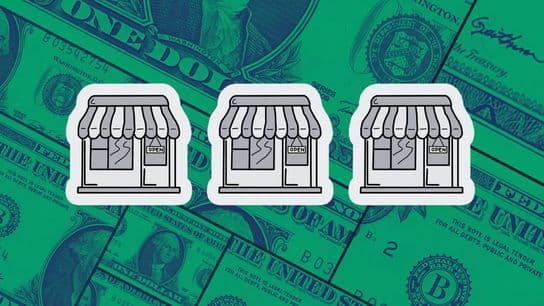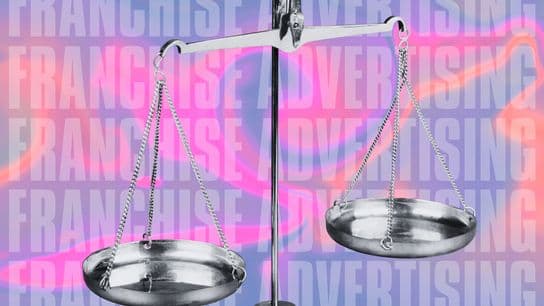The Science of Forecasting the Future of Business
This white paper will introduce you to the science and the advantages of forecasting the future for business purposes.
Is forecasting the future an art mastered only by wizards? This paper will introduce you to the science and the advantages of forecasting the future for business purposes.
What is the benefit of business modeling? Across industries, services or products, business modeling will help optimize the customer offering and internal processes that meet the company’s goal.
This white paper will provide tools that one can apply concretely to his or her circumstances.
As a concrete example, I will explain how we have applied this tool to benefit Buffalo Wings & Rings (BW&R), a family sports restaurant franchise concept which has nationwide presence in the US, as well as a dozen of international locations.
The Goal
Business modeling improves the quality of decisions and lowers the cost and time spent on trials and errors.
Imagine if one could model with a high rate of success the stock market, the weather, the lottery, people’s behaviors, etc. Stakes of modeling are high.
Modeling supports the business’s decision making process.
Acquiring and managing data has a cost and delays decision making. So the question that you should ask yourself is this: is more data going to change the decision? If the answer is "yes," then it is beneficial to spend more time. If not, then save some time and money and move to execution.
Wording:
· Dependent variables: considered as the output. This is what one is trying to optimize.
· Independent variables: considered as the input variables; these are the variables for which one is able to find the data.
At BW&R, the dependent variable is the sales of each restaurant. Fifty weighted independent variables make a long list of input data.
Each subsequent section of this paper will follow the same steps:
· Considerations: this is the theoretical aspect;
· Tools: suggested tools that one can apply to their own circumstance;
· Buffalo Wings & Rings: concrete example.

The Process
First phase: data acquisition
Considerations:
The first step is to acquire data and input it in a work sheet. Excel is a good starting tool. If the studied phenomenon includes multiple locations (manufacturing, point of sales), the task is greatly facilitated by a central depositary of data, common computer systems, and common database rules (this is called data alignment).
Some data will be acquired by subscribing to professional databases. Many companies supply for a fee industry data.
Some data is not readily available. You might have to go “in the field” and collect it. Although it is tedious, it will allow to better understand the depth of each variable.
Tools
We will illustrate a theoretical restaurant chain with many outlets. The dependent (sales) and independent variables’ data have been uploaded in MS Excel.

At Buffalo Wings & Rings:
- All the restaurants use the same computer system called point of sales, supplied by industry leader Micros. Overtime we have introduced more discipline in the databases to allow comparison and addition (IE: sales of Hamburgers chain wide, why Texas sells more wings than Ohio)
- On the Corporate side, data was ready available, however hosted in various employees’ computers. It became obvious that there was a benefit to centralize all the data in one server and allow multiple users to query the database.
Second phase: data analysis
Consideration
Where to start? As always, the right people will maximize the power of the tool. Try to look in your team if somebody is talented with data analysis. You need an individual with data curiosity, statistical education and knowledge of the business.
Data integrity; there is a popular say: “garbage in, garbage out”. Because our understanding is based out of collected data, data is key and will influence the final decision.
Tips:
- Eliminate elements that are not statically representative. These are the elements that you know do not fit your model.
- Eliminate the top performers and the under performers. A typical statistical model can be charted with a shape following the Gauss curve (also called the bell curve). The zone between the mean plus and minus one sigma encompasses 68% of the population. Plus or minus two sigma encompasses 95% . In this case of modeling, you try to understand what the mass is doing. Mean plus or minus one or two sigma is enough. In case of total quality /zero defect modeling, you need to encompass all the variance and therefore consider plus or minus six sigma (thus the well known theory of Six Sigma).

The tool itself:
- Entry level: Ms Excel has some good statistical function that will help;
- More comprehensive: MS Access; suited for large, growing databases;
- Professional level: industry specific analysis software coupled with datawarehouse.
- Data integrity is key:
- Own the data: does it match with the reality that you know? Your judgment will help spot anomalies or reinforce the match data/reality
- Typically, it is better to have one individual take care of a given field. Define rules and be very accurate with data entry. Queries malfunction with fuzziness.
At Buffalo Wings & Rings:
- We started with a sample of 50 locations. Quickly we understood that the sample was a reflection of a company’s evolution. We decided on a smaller sample, representing current practices and aligned with the future of the company.
- The database is hosted on a central server. Three individuals representing different functions of the business are responsible of the data entry and maintenance.
Third step: modeling
This phase is the most difficult. Modeling is the science of finding mathematical formulas that describe a physical phenomenon.
When Isaac Newton observed and modeled the theory of gravity, he followed all the steps of the process from this paper:
- Observation: saw the apple fall;
- Reporting: what happened: the apple falls;
- Analyzing: why: understanding the gravity. Today, we take this discovery for granted. In the late 1600’s it took an incredible mind to imagine an invisible force. Only a visionary smart individual can imagine that a force is pulling the apple toward the center of the earth;
- Modeling: finding that the algebraic formula: P=Mg describes the phenomenon;
- Forecasting: using the formula, generations of students and scientists were able to forecast all kinds of phenomenon. For example, when the aviation pioneers were working on denser-than-air flying objects, this formula was key to succeed. When later man went in space or to the moon, the formula was heavily used;
- The model can be linear, geometric , exponential, graphic, geometric.

An example of linear regression with the correlation factor displayed

At Buffalo Wings & Rings:
We have proceeded with the following steps:
- Identify the variables that have a impact restaurant sales;
- Identify their weight;
- Build a predictable model.
Fourth step: forecasting
Considerations
So far the focus has been understanding what has happened or what is happening. In this chapter, we are finally moving in the world of “what will happen”. As a business minded individual, forecasting is the goal of the business modeling tool. Based on historical data, one can make today the right decisions in order to increase income and lower expenses in the future. This is mastering past-present-future.
The Tool
The previously mentioned work sheet or data base needs two modifications:
- An input page for the element which is being tested and a comparison field to display the new sample versus the base will need a slight modification, in order to input the data that you want to compare/process vis-a-vis the historical data.
- The data is then displayed side by side with the historical data.
- By comparing the independent variables, one can forecast now the dependent. It is key to keep a critical judgment, this is no exact science.

Output: Dependent variable as a function of independent variables.
At Buffalo Wings & Rings
- The goal is to predict the sales of future restaurants to be built by franchisees.
- Find the data (typically by subscription) for our potential sites;
- Input the data in the forecasting tool
- Get the predicted sales
The orange lines are fed by an input page. They allow forecasting sales for future locations.
For ease of reading, the Excel sheet has been enhanced with easy to recognize color coding:
· Green denotes a criteria with positive correlation;
· Pink denotes a negative (inverse) correlation.
Conclusion
Let us go back to the concept chart. If you apply the business modeling process, you are now able to understand what has happen, what happens, and try to forecast what will happen. This knowledge will provide you and your business a competitive advantage to others who do not model or model at a lower quality level than your organization.
If you have questions, you can reach me though the contact function of the Buffalo Wings & Rings website. Click here
Philip Schram
Chief Development Officer
Buffalo Wings & Rings
Credit for photos: Wikipedia and Candlepartners.com
MORE STORIES LIKE THIS
Franchise Deep Dive: QC Kinetix Franchise Costs, Fees, Profit and Data
From Traffic Jam Commuter to Franchisee to Franchisor: The Unconventional Journey of Frios Gourmet Pops’ CEO
Franchise Deep Dive: Renovation Sells Franchise Cost, Fees, Profit and Data
Franchise Deep Dive: Ledo Pizza Franchise Costs, Fees, Profit and Data













